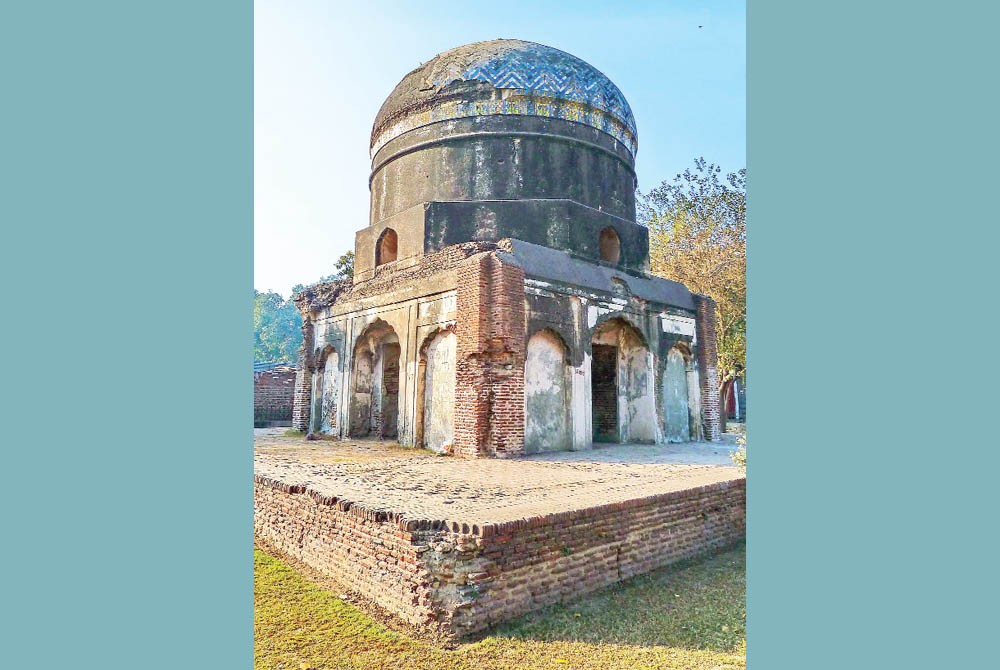
The task of preserving the old city and restoring heritage sites should have started decades ago

"Preserve your memories, keep them well, what you forget, you can never retell," wrote American novelist and poet Louisa May Alcott. And, be it far from me to say otherwise, she was absolutely right. An ancient city must always have something ancient to look back on. We must always have our roots to stand on, or else we might not be able to stand any longer. We must always have our gardens to wander in before we find ourselves completely lost in a city of ruins.
Unfortunately, Lahore until very recently seemed to boldly reject the wise words of Alcott. It is not often that the Lahoris get to feel like they live in the historical heart of Pakistan. It was only in 2017 that guided tours of historical sites were started in the city. Eventually, tourists flocked to these ancient structures after years of living near them but never really getting to experience them. Mesmerized by this newfound connection to their old city, 75,000 tourists are reported to have visited the Royal Trail in 2018 and almost 4500,000 visited the Lahore Fort. The year ended with the introduction of night tours -- again, for the first time for the city -- and almost 4,700 tourists made their way in.
With this recent peak in interest in tourism came the interest in maintaining, restoring and conserving the historical sites. Just last week, 150 lac cubic metres of wild plantation and debris were removed as part of the process of excavation in an attempt to conserve the Lahore Fort. As an unexpected consequence, two underground tunnels together with a British arsenal were discovered.
While all these figures and reports seem positive and encouraging, they are also disappointing in some way. For instance, the newfound basements, equipment, and tunnels under the Lahore Fort signal at the unexplored (read neglected) past of what is one of the most historical cities of the region. Why did it take us this long to discover that there is so much more to our history and heritage?
Tania Qureshi, Deputy Director of the Walled City of Lahore Authority (WCLA), offers an explanation: "We started in April 2012 when the authority was established. The Shahi Hamams came under our wings in 2014. We took over the Shahi Qila (aka Lahore Fort) in 2015. The process of the conservation of the Musaman Gate began in 2017. Before this, major parts of the fort had been lying in neglect and were labelled as no-go areas."
Qureshi claims that the WCLA’s work is more like "damage control. They had to swoop in and plaster a crumbling old city. So much damage is already done to the ancient jewels of Lahore."
She believes that the task of preserving the city should have been started decades ago.
Before the WCLA was set up in 2012, the Archeological Department of Punjab was responsible for preserving heritage cities of the old city. But, as Qureshi puts it, major parts of the fort were ignored and no one could touch them. The said department did not make any important efforts to maintain or promote tourism in the old city. This, according to her, was due to "a lack of will and vision for the work, and motivated leaders."
Today, the department is responsible for heritage sites around Lahore that include the Baradari of Kamran Mirza and Buddhu Ka Aawa. Again, most of these structures are unheard-of and exist in an unfortunate state. The Baradari of Kamran Mirza is distinguished by the filthy stream of contaminants and toxicants that flow alongside it, while Buddhu ka Aawa is surrounded by motor workshops that encroach on it and threaten to topple down the structure. Besides, many other magnificent remnants of Lahore’s past are endangered because the authorities do not care. The concerned authorities must find the "will" and "vision" as well as "motivated leaders" soon enough, if they mean to preserve the relics our historical past.